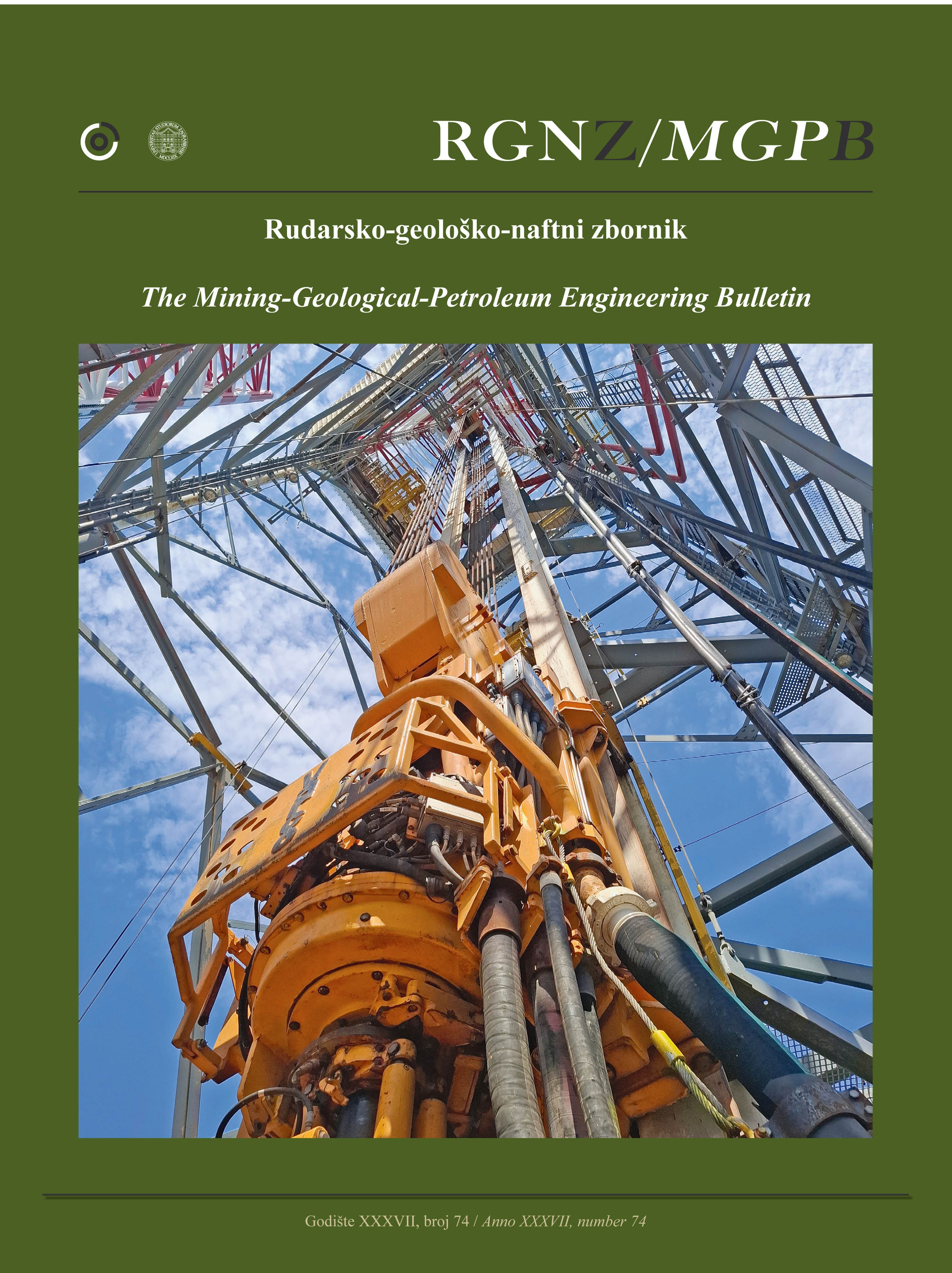Empirical equation for predicting fracture frequency of carbonate and silicate rocks using P-wave velocity
DOI:
https://doi.org/10.17794/rgn.2025.3.3Keywords:
carbonate, silicate, fracture frequency, ultrasonic measurement, rock velocityAbstract
Fracture frequency (FF) is necessary for fracture quantification in rock mass classification systems and plays an important role in the mechanical properties of rock mass. To date, laboratory studies on the effects of jointed rock on rock velocity have been limited to high FF conditions and have not incorporated lithological variations. This study aimed to estimate the FF indirectly by determining its relationship with wave velocity in carbonate and silicate rocks. Two carbonate (CA1 and CA2) and two silicate (CR1 and CR2) rocks were drilled from four sites on the Java Island in Indonesia, and their characteristics were identified through petrographic tests, physical property measurements, and ultrasonic velocity tests. Artificial joints were made in the core samples of these rocks to create varying joint spacing, especially at low frequencies between 0 and 24 joints per metre. We successfully obtained new empirical equations expressing the relationship among the FF, intact rock P-wave velocity (Vp0), and jointed rock P-wave velocity (Vpj). For CA1, CA2, CR1, and CR2, the Vpj/Vp0 ratios were 1–0.0172FF, 1–0.0301FF, 1–0.0371FF, and 1–0.0349FF, respectively. The coefficient of determination of the equation for each lithology showed that the porosity, velocity, and density affected the fitting of the data to the equation. Overall, the findings of this study can be used to optimise the utilisation of geophysical methods for geotechnical monitoring, especially the identification of FF in lithology contrast between carbonate and silicate rocks or rocks with different compaction levels.
Downloads
Published
Issue
Section
License
Copyright (c) 2025 Sari Melati, Ridho Wattimena, David Sahara, Ganda M. Simangunsong, Wahyu Hidayat

This work is licensed under a Creative Commons Attribution 4.0 International License.
Creative Commons-BY
Authors who publish with this journal agree to the following terms:
In agreeing this form, you certify that:
- You read the ethical codex of the RGN zbornik available at journal web.
- You submitted work is your original work, and has not previously been published and does not include any form of plagiarism.
- You own copyright in the submitted work, and are therefore permitted to assign the licence to publish to RGN zbornik.
- Your submitted work contains no violation of any existing copyright or other third party right or any material of an obscene, libellous or otherwise unlawful nature.
- You have obtained permission for and acknowledged the source of any illustrations, diagrams or other material included in the work of which you are not the copyright owner.
- You have taken due care to ensure the accuracy of the work, and that, to the best of your knowledge, there are no false statements made within it.
- All co-authors of this submitted work are aware of, and in agreement with, the terms of this licence and that the submitted manuscript has been approved by these authors.
Publication licence
You retain copyright in your submitted work, according to journal license policy (CC-BY). By signing this form you agree that RGN zbornik may publish it under the publication licence. In summary the licence allows the following:
Anyone is free:
- To copy, distribute, display, and perform the work.
- To make derivative works.
Under the following conditions:
- The original author must always be given credit.
- The work may not be used for commercial purposes.
- If the work is altered, transformed, or built upon, the resulting work may only be distributed under a licence identical to this one.
Exceptions to the licence
In addition to publishing the work printed under the above licence, RGN zbornik will also enable the work to be visible online.
The journal editorial can change the licence rules anytime but it cannot retroactively restrict author(s) rights.


